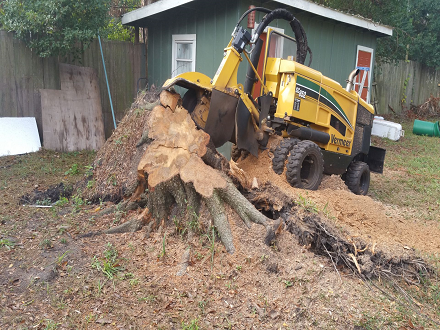Tree trimming is not just about maintaining the aesthetics of your landscape; it’s also crucial for the health and safety of your trees. Proper trimming promotes growth, prevents diseases, and eliminates hazards. However, tree trimming is not a task to be taken lightly. It requires knowledge, skill, and the right tools. In this comprehensive guide, we will delve into the techniques and tools necessary for effective tree trimming.
Understanding Tree Trimming
Before diving into the techniques and tools, it’s essential to understand the principles behind tree trimming. Trimming serves several purposes:
-
Health
- Removing dead, diseased, or damaged branches helps the tree allocate resources to healthier parts, promoting overall vitality.
-
Safety
- Eliminating weak or overhanging branches reduces the risk of accidents, such as falling limbs.
-
Aesthetics
- Pruning enhances the tree’s natural shape and appearance, improving the overall look of your landscape.
-
Growth
- Strategic trimming can encourage desirable growth patterns and improve fruit production in fruit-bearing trees.
Timing of Tree Trimming
The timing of tree trimming varies depending on the type of tree and the objectives of trimming. However, a general rule of thumb is to trim during the tree’s dormant season, typically in late winter or early spring. During this time, the tree is less vulnerable to stress and disease, and it’s easier to assess its structure without foliage obscuring the view.
Techniques of Tree Trimming
-
Crown Thinning
- This technique involves selectively removing branches from the tree’s crown to increase light penetration and air circulation. It’s particularly useful for dense trees or those with crossing branches.
-
Crown Raising
- Crown raising entails removing lower branches to provide clearance for structures, pedestrians, or vehicles beneath the tree. It’s crucial to maintain the tree’s natural shape while performing this technique.
-
Crown Reduction
- When a tree has outgrown its space or poses a risk, crown reduction can help. It involves trimming back the outer edges of the crown while maintaining the tree’s overall shape. Care must be taken not to remove too much foliage, as it can stress the tree.
-
Deadwooding
- Deadwooding is the removal of dead or dying branches from the tree. These branches are not only unsightly but also pose a safety hazard as they can fall unexpectedly.
-
Directional Pruning
- Directional pruning is essential for guiding the tree’s growth in a particular direction. It’s often used in urban settings to prevent branches from interfering with power lines or structures.
Tools for Tree Trimming
-
Pruning Shears
- Also known as hand pruners or secateurs, pruning shears are essential for cutting small branches and twigs. Look for high-quality shears with sharp blades and ergonomic handles for comfortable use.
-
Loppers
- Loppers are designed for cutting thicker branches that are out of reach of pruning shears. They feature long handles for increased leverage and can cut branches up to two inches in diameter.
-
Pruning Saw
- Pruning saws come in various shapes and sizes, but they are generally designed for cutting larger branches. Choose a saw with sharp, rust-resistant teeth for smooth and efficient cuts.
-
Pole Pruners
- Pole pruners are ideal for reaching high branches without the need for a ladder. They consist of a pruning head mounted on a telescopic pole, allowing you to trim branches from the ground.
-
Chainsaw
- For heavy-duty trimming or tree removal, a chainsaw is indispensable. When using a chainsaw, always follow safety precautions and consider hiring a professional for complex or hazardous tasks.
-
Safety Gear
- Regardless of the tools used, safety should always be a priority when trimming trees. Wear protective gear such as gloves, safety glasses, a hard hat, and sturdy footwear to prevent injuries from falling branches or debris.
Tips for Safe and Effective Tree Trimming
-
Inspect the Tree
- Before trimming, assess the tree’s overall health and structure. Look for signs of disease, pest infestation, or structural weaknesses that may affect the trimming process.
-
Plan Your Cuts
- Determine which branches need to be removed and plan your cuts accordingly. Avoid making unnecessary cuts that could harm the tree or compromise its structural integrity.
-
Follow the Three-Cut Technique
- When removing larger branches, use the three-cut technique to prevent bark tearing and ensure a clean cut. Make an undercut first, followed by a top cut to remove the branch, and finish with a final cut close to the branch collar.
-
Maintain the Tree’s Natural Shape
- While trimming, aim to preserve the tree’s natural shape and structure. Avoid over-pruning or creating an imbalance that could affect its growth.
-
Clean and Sharpen Your Tools
- Regularly clean and sharpen your trimming tools to ensure they remain effective and minimize the risk of spreading disease between trees.
-
Consider Hiring a Professional
- For large trees or complex trimming tasks, consider hiring a certified arborist or tree service company. They have the expertise and equipment to safely and efficiently trim your trees while minimizing the risk of damage.
Conclusion
Tree trimming is an essential aspect of tree care that promotes health, safety, and aesthetics. By understanding the techniques and tools involved, you can effectively maintain your trees and ensure their long-term vitality. Whether you’re pruning small branches with hand shears or removing larger limbs with a chainsaw, always prioritize safety and proper technique to achieve the best results. With the knowledge gained from this guide, you’ll be well-equipped to tackle tree trimming tasks with confidence and precision.










